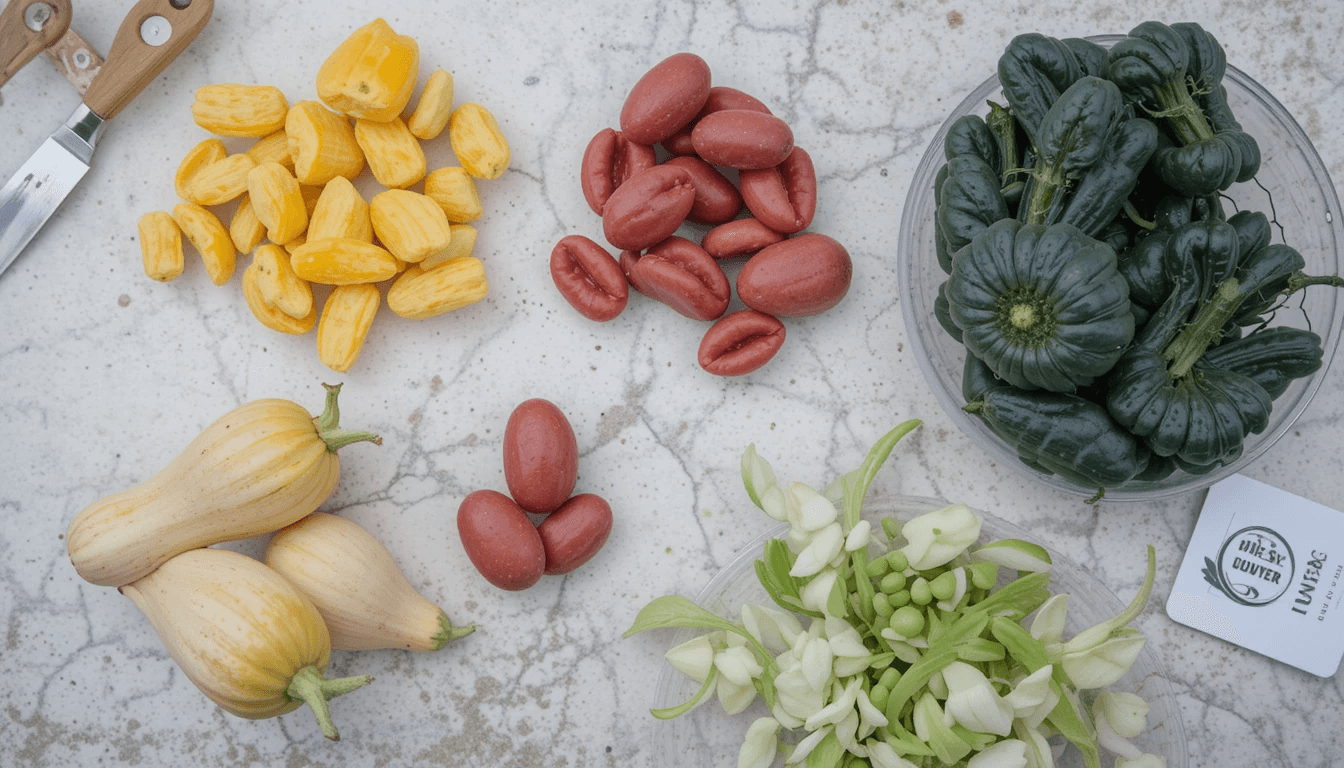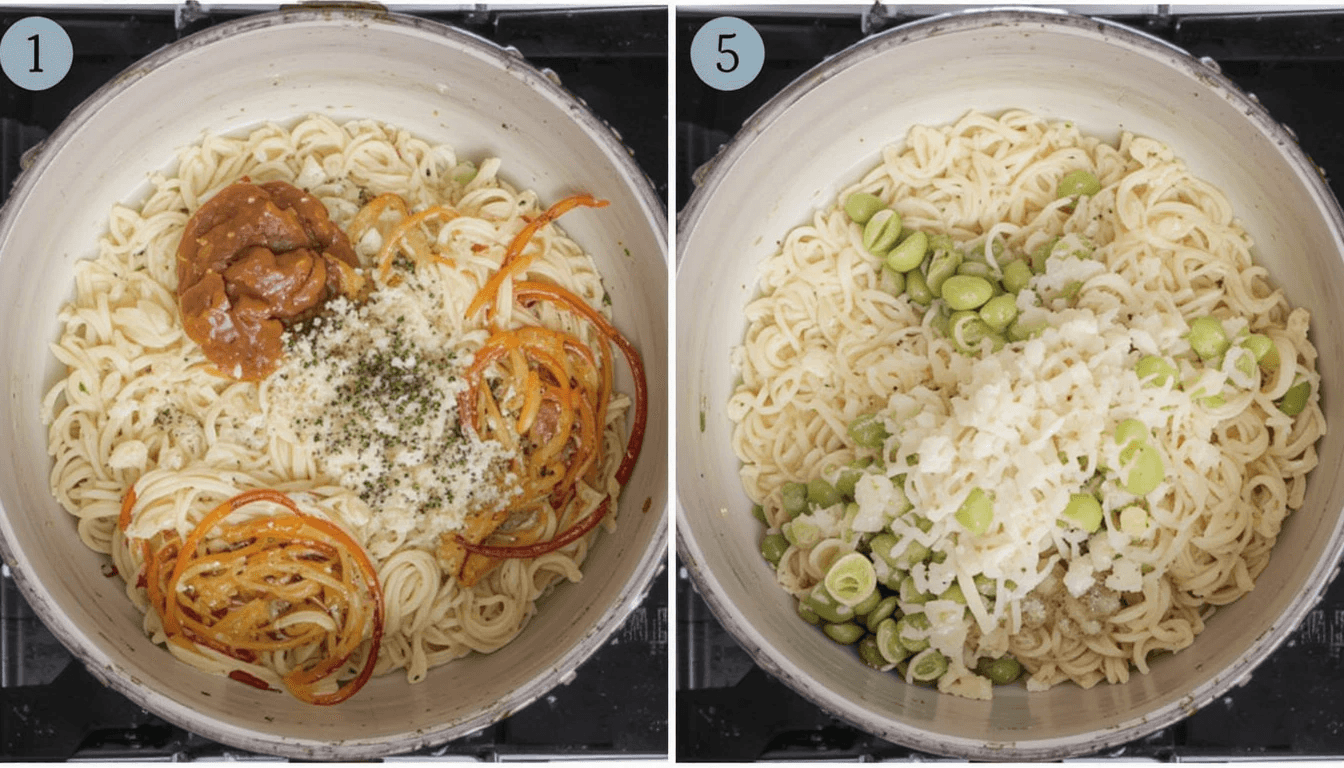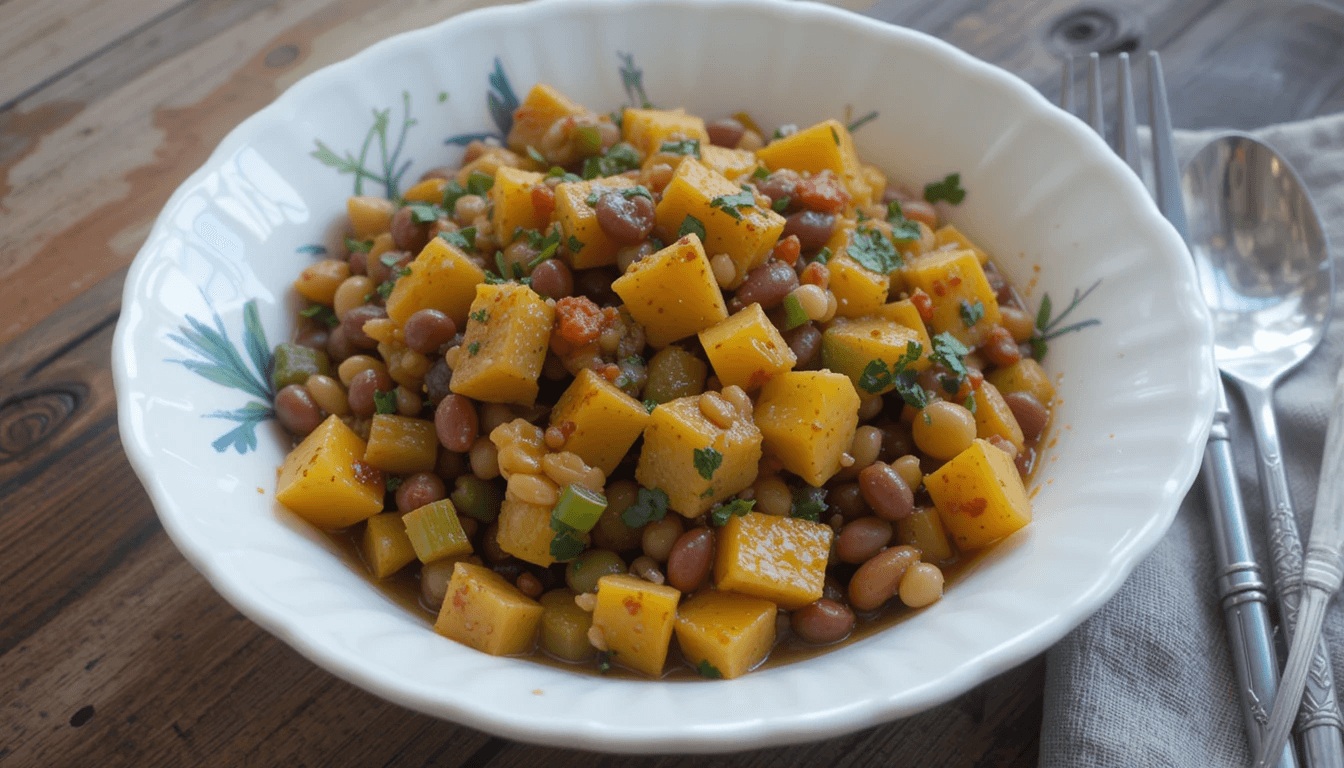Recipe Squash and Kidney Beans can be an incredibly hearty and satisfying dish, blending sweet and savory notes into one bowl. By combining tender squash with perfectly seasoned kidney beans, you’ll enjoy a comforting and nutritious meal. Whether you’re new to cooking or a seasoned pro, this recipe squash and kidney beans approach will help you create something delicious in no time!
Introduction
Imagine stepping into your kitchen on a chilly evening, craving something that warms both your body and soul.
You look around and spot a bright orange squash alongside a can of kidney beans in your pantry.
A spark of inspiration hits, and you realize you can craft something truly marvelous—a recipe squash and kidney beans dish that bursts with natural sweetness, rich protein, and wholesome goodness.
In this article, we’ll dive deep into how you can effortlessly bring these ingredients together, exploring different cooking techniques, flavor boosters, and health considerations along the way.
You’ll discover tips on selecting the right squash, preparing kidney beans safely, and even adding playful twists to make this dish your own.
Disclaimer: This article is for informational purposes only and does not replace professional veterinary advice or any specialized healthcare guidance. Always consult a qualified professional for concerns regarding diet, allergies, or medical conditions.

Why Focus on Squash and Kidney Beans?
Before we jump into the detailed steps, let’s explore why recipe squash and kidney beans continues to captivate home cooks. Squash offers a mellow sweetness, a creamy texture, and a wealth of vitamins, particularly vitamin A and fiber (Source: USDA). Meanwhile, kidney beans bring a robust, savory component loaded with protein, dietary fiber, and essential minerals like iron and magnesium. When combined, these two ingredients form a balanced duo that can be the star of a meal or a hearty side dish.
The Nutritional Powerhouse
- High in Fiber: Both squash and kidney beans are rich in dietary fiber, supporting healthy digestion. Fiber also helps you feel full, which may benefit weight management.
- Rich in Vitamins and Minerals: Squash boasts beta-carotene (converted to vitamin A in the body) while kidney beans contain B vitamins, iron, and magnesium.
- Plant-Based Protein: For anyone looking to reduce meat consumption, kidney beans provide a substantial protein source. Teaming them with squash helps diversify the nutrient profile of your meal.
- Low in Fat: Squash is generally low in fat, and kidney beans are virtually fat-free. Together, these ingredients support a balanced approach to healthy eating.
If you’ve been searching for a hearty meal that satisfies your cravings without overloading on unhealthy components, recipe squash and kidney beans fits the bill. Plus, you can tailor the dish to your personal taste by adding herbs, spices, and other flavorful ingredients. Throughout this article, we’ll explore all the ways you can maximize both flavor and nutrition.
Selecting Your Ingredients
Let’s talk about the components you’ll need for a recipe squash and kidney beans creation that truly stands out.
Choosing the Right Squash
Not all squashes are created equal! You have quite a few options:
- Butternut Squash: Known for its smooth texture and subtly sweet flavor, ideal for roasting or pureeing.
- Acorn Squash: Offers a slightly nutty taste with a mild sweetness; perfect for stuffing or slicing.
- Kabocha Squash: A bit sweeter and denser, suitable for stews or mashes.
- Delicata Squash: Thinner-skinned and easy to slice, with a mildly sweet flavor.
Any of these can pair beautifully with kidney beans. The key is to choose a squash that complements the earthy, hearty notes of beans. If you prefer a creamier texture, butternut or kabocha might be your go-to. For a slightly lighter consistency, acorn or delicata squash could work wonders.
Picking the Best Kidney Beans
When it comes to kidney beans, you can use either canned or dried. Canned beans are convenient, as they’re precooked, but if you have time and want to control sodium levels more rigorously, dried beans are a great option. When using dried kidney beans, be sure to soak them thoroughly and cook them properly, as undercooked kidney beans can cause digestive discomfort due to compounds like phytohaemagglutinin.
Aromatics and Flavor Boosters
No recipe squash and kidney beans meal is complete without some flavor enhancers:
- Onions and Garlic: Classic aromatics that form the base of many savory dishes.
- Herbs: Thyme, rosemary, sage, or oregano can bring out the squash’s natural sweetness.
- Spices: Cumin, paprika, or even a touch of chili powder for a mild kick.
- Broth or Stock: Vegetable stock can deepen the flavor, especially if you’re going for a soup or stew consistency.
Feel free to improvise with what you have on hand. Even a splash of coconut milk or a sprinkle of cheese can transform your recipe squash and kidney beans into a new culinary adventure.

Step-by-Step Cooking Process
Now, let’s dive into the heart of creating a recipe squash and kidney beans dish. For this step-by-step, we’ll assume you’re using butternut squash and canned kidney beans for convenience, but feel free to adapt to your preferences.
- Prep the Squash
- Peel the squash if needed, and remove any seeds.
- Cut it into cubes, roughly 1-inch in size for even cooking.
- Drizzle with olive oil and a pinch of salt and pepper if you plan to roast it separately.
- Cook the Squash
- Roasting: Spread the squash cubes on a baking sheet at 400°F (205°C) for about 20-25 minutes, until fork-tender.
- Steaming: Place the squash in a steamer basket over boiling water for 10-15 minutes.
- Boiling: Submerge the squash cubes in lightly salted water and boil for 10-15 minutes.
- Prepare the Beans
- Canned: Drain and rinse the beans to remove excess sodium.
- Dried: Soak them overnight, then drain and rinse. Boil in fresh water for at least 10 minutes, then reduce to a simmer until tender (total cooking time can range from 45 minutes to over an hour depending on dryness and altitude).
- Sauté Aromatics
- In a large pot or skillet, heat a tablespoon of olive oil.
- Sauté chopped onions for about 3 minutes, then add minced garlic.
- Stir in herbs and spices, letting them bloom for an additional minute.
- Combine Ingredients
- Add cooked squash and kidney beans to the pot.
- Pour in vegetable stock if you’re aiming for a stew or soup consistency. If you prefer a thicker dish, use less liquid.
- Simmer for 10-15 minutes, allowing the flavors to meld. Taste and adjust salt, pepper, or spices as desired.
- Finishing Touches
- Garnish with fresh herbs like parsley or cilantro.
- For extra creaminess, stir in coconut milk, sour cream, or even a dash of heavy cream if you’re not focusing on a vegan version.
- Serve hot with crusty bread, rice, or enjoy as-is.
Voila! You’ve just crafted a comforting recipe squash and kidney beans meal that can serve as a main dish or a hearty side. The combination of sweet squash, savory beans, and aromatic seasonings is sure to make this recipe a crowd-pleaser.
Variations for Different Tastes
One of the best things about a recipe squash and kidney beans dish is how flexible it can be. Consider these variations to keep your meals exciting:
- Spicy Kick: Add jalapeños, chili flakes, or a dash of hot sauce.
- Creamy Curry: Stir in curry powder, coconut milk, and maybe some diced tomatoes for a fusion-style meal.
- Cheesy Bake: Layer your squash, beans, and sauce in a casserole dish. Top with shredded mozzarella or cheddar, then bake until bubbly.
- Mediterranean Twist: Combine your squash and kidney beans with olives, feta, and oregano. Finish with a drizzle of olive oil.
- Salad Bowl: Cool your cooked squash and beans. Toss with leafy greens, sliced peppers, and a vinaigrette for a light yet filling salad.
These variations prove that once you master a fundamental recipe squash and kidney beans technique, your imagination is the only limit to how creative you can get.
Table: Cooking Methods at a Glance
Below is a quick-reference table to help you decide how to cook your squash and kidney beans for your chosen recipe squash and kidney beans approach:
| Cooking Method | Squash Prep | Kidney Beans Prep | Estimated Time | Texture |
|---|---|---|---|---|
| Roasting | Cubed, drizzled w/ oil | Canned or pre-cooked | 20-25 mins (squash) + Warm-up for beans | Sweet, caramelized |
| Steaming | Cubed | Canned or pre-cooked | 10-15 mins (squash) + Warm-up for beans | Soft, tender |
| Boiling | Cubed in salted water | Soaked & boiled dried or canned | 10-15 mins (squash) + 45+ mins (dried beans) | Mild, straightforward |
| Stew/Soup | Cubed or mashed | Canned or soaked dried | 30 mins (combined simmer) | Rich, cohesive |
Use this table to guide you as you plan how to achieve your ideal flavor and texture profile for a recipe squash and kidney beans meal.
Health and Dietary Considerations
Fiber and Digestion
Both squash and kidney beans shine in the fiber department. Fiber helps keep you feeling full, which can be beneficial if you’re watching your calorie intake. It also supports a healthy gut microbiome. However, if you’re not used to a high-fiber diet, introduce your recipe squash and kidney beans meals gradually to avoid digestive discomfort.
Blood Sugar Regulation
Squash has a relatively low glycemic index, particularly if it’s paired with a protein source like kidney beans. This combination can help stabilize blood sugar levels, though individual responses may vary. Always consult a healthcare professional if you have specific concerns like diabetes or metabolic conditions.
Potential Allergies or Sensitivities
While allergies to squash or kidney beans are uncommon, they are not impossible. If you’re trying a recipe squash and kidney beans dish for the first time or introducing it to someone else’s diet, be mindful of any allergic reactions. Consult a professional if you suspect any food sensitivities.
A Note on Kidney Bean Toxins
Undercooked kidney beans contain high levels of phytohaemagglutinin, which can be toxic and lead to gastric upset. The solution is simple: boil your kidney beans for at least 10 minutes before reducing to a simmer. Canned kidney beans are already pre-cooked, so this concern is minimized, but it’s worth mentioning to ensure safety in your recipe squash and kidney beans meals.
Personal Experience and Tips
I remember the first time I tried a recipe squash and kidney beans dish on a busy weeknight. I roasted my butternut squash while simultaneously simmering dried kidney beans I had soaked the night before. The aroma of sage and thyme filled my kitchen, and I was amazed by how effortlessly the flavors came together. Today, I keep variations of this meal in my regular cooking rotation, altering the spice blend or the type of squash to keep things interesting. My personal tip? Roast the squash separately with just a hint of chili powder—it adds a smoky-sweet depth that highlights the earthiness of the beans.
Frequently Asked Questions (FAQ)
What can I add to kidney beans for flavor?
Try sautéed onions, garlic, and herbs to bring out the richness in a recipe squash and kidney beans meal. Adding a splash of lemon juice or vinegar can balance the hearty beans. A touch of chili spice can also deliver a delightful kick.
Why should you not boil kidney beans?
You actually need to boil kidney beans for at least 10 minutes to remove toxins before simmering them in a recipe squash and kidney beans dish. Inadequate cooking can lead to digestive discomfort. Proper preparation ensures both safety and flavor.
What is the best way to cook kidney beans?
Soak and boil them thoroughly before incorporating them into your recipe squash and kidney beans creation. Boiling removes potential toxins while achieving a tender texture. After that, season to taste for a hearty, comforting dish.
Are kidney beans good for your kidneys?
Kidney beans can be part of a balanced diet, including a recipe squash and kidney beans dish, but individual needs vary. They’re high in fiber and low in fat. For specific kidney conditions, consult a healthcare professional before making changes.
How do I prevent bloating when eating beans?
Soaking and cooking beans thoroughly for a recipe squash and kidney beans meal helps reduce gas-producing compounds. Introducing beans gradually to your diet also helps. Drinking enough water can further support digestion.
Can I freeze leftover squash and kidney beans?
Yes, you can freeze your recipe squash and kidney beans leftovers in airtight containers. Thaw them in the fridge before reheating to maintain texture. It’s a convenient way to enjoy a quick meal later.
Can I replace kidney beans with another bean type?
Absolutely, black beans or cannellini beans can work in a recipe squash and kidney beans dish. Each bean offers a slightly different flavor and texture. Choose what you love for a similarly nutritious result.
What squash works best with kidney beans?
Butternut, acorn, or kabocha all blend well in a recipe squash and kidney beans dish. Each type adds its unique level of sweetness and texture. Pick your favorite for a comforting, flavorful meal.
Key Points
- recipe squash and kidney beans merges sweet squash flavors with hearty legumes for a filling, nutritious dish.
- Properly cook kidney beans (soak and boil) to eliminate toxins.
- Choose any squash variety—roasting enhances sweetness, while steaming or boiling provides a tender texture.
- Add aromatics, herbs, and spices to boost flavor; garnish with fresh herbs or cheese if desired.
- The dish can adapt to personal taste—think spicy, creamy, Mediterranean, or even a chilled salad version.
- Freeze leftovers in airtight containers for a quick, reheatable meal later.
Conclusion
Combining squash and kidney beans is more than just a culinary choice—it’s an opportunity to enjoy a balanced, comforting meal that caters to various dietary preferences. Whether you savor it as a hearty stew, a thick casserole, or a light salad, a recipe squash and kidney beans approach can seamlessly adapt to your tastes and nutritional goals. By experimenting with different squash varieties, spice blends, and cooking methods, you’ll find endless ways to make this classic combination feel new and exciting. Ultimately, you’re the chef in your own kitchen, so don’t hesitate to trust your instincts and explore all the delicious possibilities.

